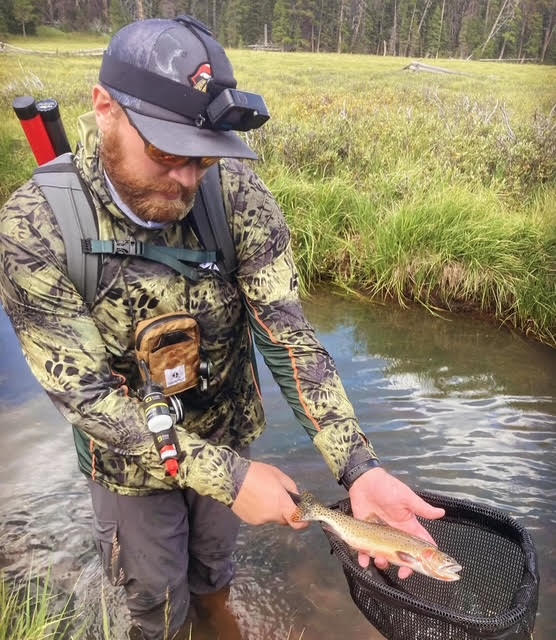Adventurist vs Preservationist
A topic that anchors itself in my mind lately is the nature of creating cliques in communities. We see it in schools, we see it in society, and I think most hobbies experience a natural level of this as well. In the world of fishing, there are many cliques. Bait anglers, fly anglers, bass anglers, and ice anglers are just a few options in the deep rabbit hole of sub communities. Many of these shared interests now have Facebook groups regarding a specific topic for a community to express their shared interests. However the purpose of this article is to cover what I believe to be two very common sub groups in the tenkara community.
Initially, most of us that pick up our first tenkara rod seem to be keen on the simplicity of the concept. Just a long running rod, with a fixed line, and a fly. Telescoping and portability; which brings the idea of simplifying the complexity of fishing, is enough to turn many people onto their first rod purchase. However once the rod owner puts the hours into the learning curve and catching a few fish, tenkara seems to cover two very common cliques for anglers. Which one of these do you believe fits you the most?
The Adventurist: A tenkara enthusiast may see their collection as a "tool" to guide them to the grandest adventures. The idea that a tenkara rod can encourage you to explore further into the backcountry passively makes your tenkara rod a map and compass. You may have started on your local waters but the boundaries continue to widen. You may start to appreciate the native fish a bit more as they tend to be in headwater streams or perhaps a good hike in the mountains or rolling hills of your geographical home is what it's all about. These are the adventurists, the campers, the hikers, and the minimalists. They are the anglers that may come home with a handful of beautiful pictures from the great outdoors and zero fish but still feel complete. I believe these are the preachers of "tenkara is simple".
The Preservationist: It may have started with catching fish but as you invest the hours of research into finding the perfect tenkara rod, your interest in exploring different brands and rods eventually creates a path of desire to explore the phenomenon that tenkara is. These are the individuals that recognize where tenkara came from and preserve that heritage. Perfecting a style of cast or studying tenkara specific flies (particularly kebari) are essential to understanding the complexity that tenkara is more than just a rod, a line, and a fly. A preservationist values the analytical nature of RFI and CCS data tied to each tenkara rod and supporting the Japanese Domestic Market is a peak tenkara experience. The rod is the trophy. Catching fish is a considerable plus. These are the individuals that find deep meaning and complexity of tenkara.
It's entirely possible that there are more cliques than the two mentioned and naturally some may even be a bit of both. Afterall, who am I to gaslight you to believe you are one over the other but it goes without saying that it's acceptable to be any of the options. One isn't a negative stigma or ideology and I bring no shame to either category. I see heavy doses of these two cliques in the very small community of tenkara; particularly on Facebook. A house divided inevitably causes contention and I think there may be a natural level of competition between the two on a subconscious level.
Where do I stand? I am the compass guy. I just enjoy fishing and it's as simple as that. The preservationist is not my cup of tea but it's a yin/yang. As if we need farmers in agriculture, we need the history teachers/scholars as well. Both are important. Though I am an American, I believe that the tenkara we experience today is an Americanized hybrid of where it came from and I am here for it. It's what our culture does. My true passion is native fish. Tenkara is my tool to connect me to them and I recognize the history and the influence of the preservationist deserves a round of applause for helping bring tenkara into my life. However, I am an adventurer through and through and tenkara is my compass.




Comments
Post a Comment